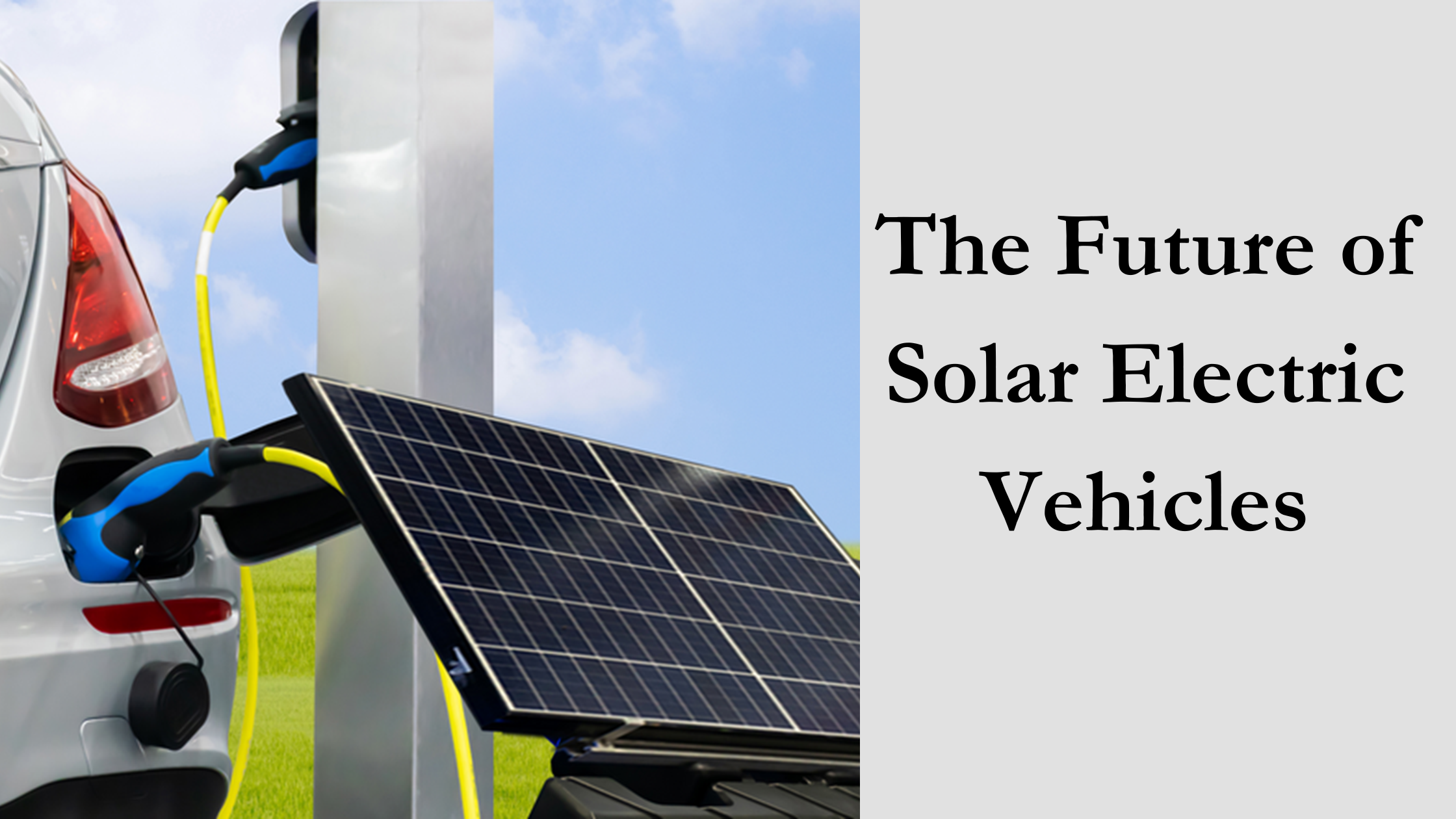Solar Electric Vehicles
Solar Electric Vehicles operate similarly to other EVs in that they have a battery pack and can be charged either at home or at a public charging station. However, they have the additional advantage of built-in solar panels, allowing them to transform solar energy into power and giving drivers extra miles.
Since a shortage of charging infrastructure and a short driving range are two of the main problems discouraging customers today, this technique, if scaled up, might accelerate the adoption of EVs. Drivers of fully effective solar electric vehicles may find that they need to recharge less frequently than they would refill a combustion vehicle. Short-distance travelers might use the electricity generated by their car’s solar panels to power the whole trip.
EVs powered by the sun could be more economical. In the past, adding a larger battery was the only way to extend the driving range. This is not a viable nor sustainable strategy for automakers, given that EV batteries now make up more than one-third of the overall cost of a car. Contrarily, solar panels are affordable and simple to include.
Commercial solar EV launches are anticipated from a number of automakers in 2023. By 2027, it is expected that the market would have grown to $689 billion. Aptera Motors, Light-year, and Sono Motors are the three organizations in the forefront of the movement.
Motors Aptera
The extremely futuristic-looking solar EV from Aptera Motors features three powered wheels and two seats, and it was inspired by racecars and fighter planes. The car’s lithium-ion battery has a 1,000-mile range thanks to its extreme lightness and aerodynamic design, and in ideal weather, it can go 40 miles a day on solar power.
Compared to other electric and hybrid vehicles currently on the road, Aptera’s vehicle consumes 30% less energy. According to the firm, owners of its vehicles may yearly cut their carbon footprint by more than 14,000 pounds of CO2.
The car is anticipated to be produced later this year and will cost between $26,000 and $48,000.
Lightyear
Lightyear wants to hasten the adoption of electric vehicles (EVs) worldwide so that by 2035, clean, scalable cars will have traveled a full lightyear.
Lightyear’s cars are aerodynamic, light, and equipped with powered wheels, just like the Aptera. The Lightyear is designed to seem more like a conventional automobile than the Aptera, though. Five square meters of safety glass-encased solar panels on the car’s solar roof and hood may be charged to provide customers a 500-mile range before requiring a new charge. The Lightyear 2 features, in the words of the maker, the “smallest energy footprint on the market.”
Earlier this year, Lightyear put a halt to the manufacture of its original model to concentrate entirely on the more economical Lightyear 2. In 2025, it’s scheduled for release.
Motor Sono
The German-based Sono Motors company wants to make its proprietary solar technology available to everyone and is committed to making every car solar-powered.
Its Sion variant incorporates 456 half cells into the body of the vehicle, extending the battery’s weekly driving range by up to 245 km and providing total independence for short journeys. Users may use the Sion’s battery to power their house or another car because of bidirectional charging.
Midway through 2023, Sono intends to start manufacturing the Sion in Europe and start providing services to its first European clients. Sion’s solar panels are composed of polymer rather than glass, making the vehicle’s production less expensive and lighter. the starting price is only $25,000 as a result.
What Elements Could Prevent the Rise of Solar EVs?
Given that the most effective solar panels now on the market are only 22% efficient, it will probably be some time before solar EVs are widely used on American roads. This issue cannot be solved by simply installing more solar panels on each car since solar EVs have a finite surface area. Not to mention that adding extra panels would diminish a vehicle’s appearance and, eventually, its marketability. Additionally, solar-only EVs still find it challenging to power longer journeys.
Numerous automakers are dedicated to developing solar EV technologies despite these obstacles. For instance, solar EVs may go up to 100 miles on solar power thanks to solar gas, which converts windows into solar panels.
Read More: The Future of Smart Speed Bump
Read More: High-Performance Concrete Build Business Case Value
